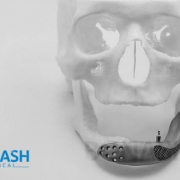Use of CAM/CAM in Implants Designing
Use of CAM/CAM in Implants Design
CAM/CAM systems have enabled us the ability to design and manufacture custom implants at an acceptable cost in a reasonable time. Additive manufacturing (3D printing) technologies lend themselves to manufacturing of complex 3d printed patient specific (custom made) implants without any barriers of design constraints.
Computer-aided manufacturing (CAM) is the use of software to control machine tools and related ones in the manufacturing of workpieces. This is not the only definition for CAM, but it is the most common CAM may also refer to the use of a computer to assist in all operations of a manufacturing plant, including planning, management, transportation and storage. Its primary purpose is to create a faster production process and components and tooling with more precise dimensions and material consistency, which in some cases, uses only the required amount of raw material (thus minimizing waste), while simultaneously reducing energy consumption. CAM is used in many schools alongside computer-aided design (CAD) to create objects.
Metal 3d printing uses bio-compatible implantable materials as pure titanium, Ti6Al4V and chrome cobalt and facilitate the direct production of custom made implants (patient specific implants) with engineered properties that match properties of the tissues at the region of implantation.



